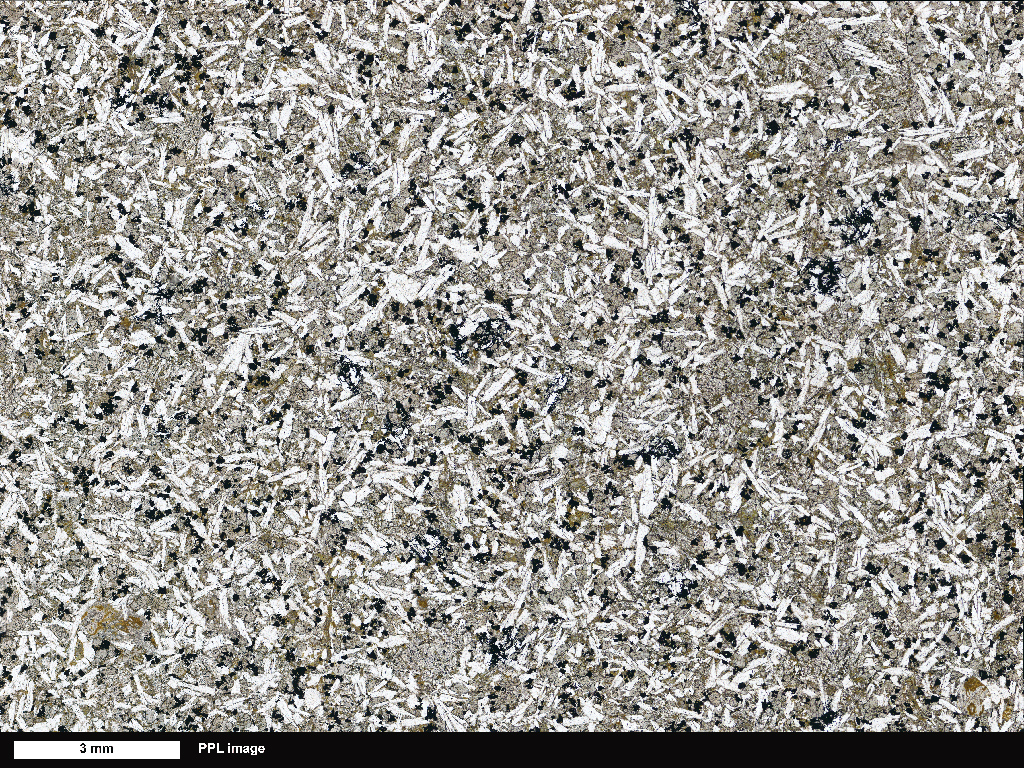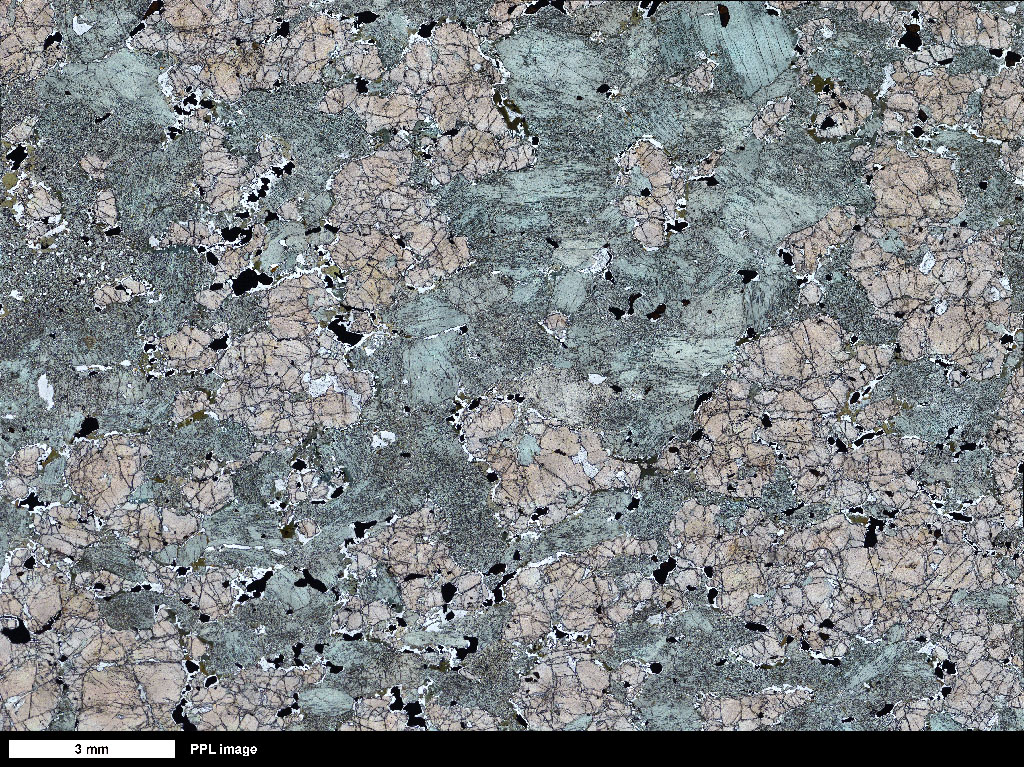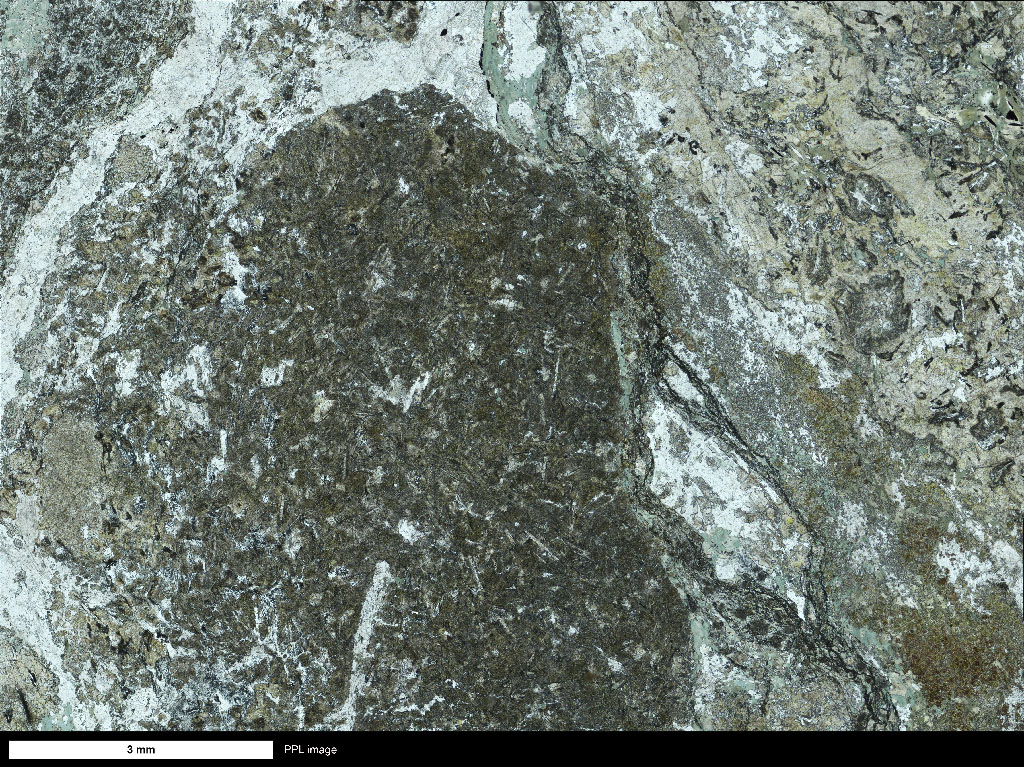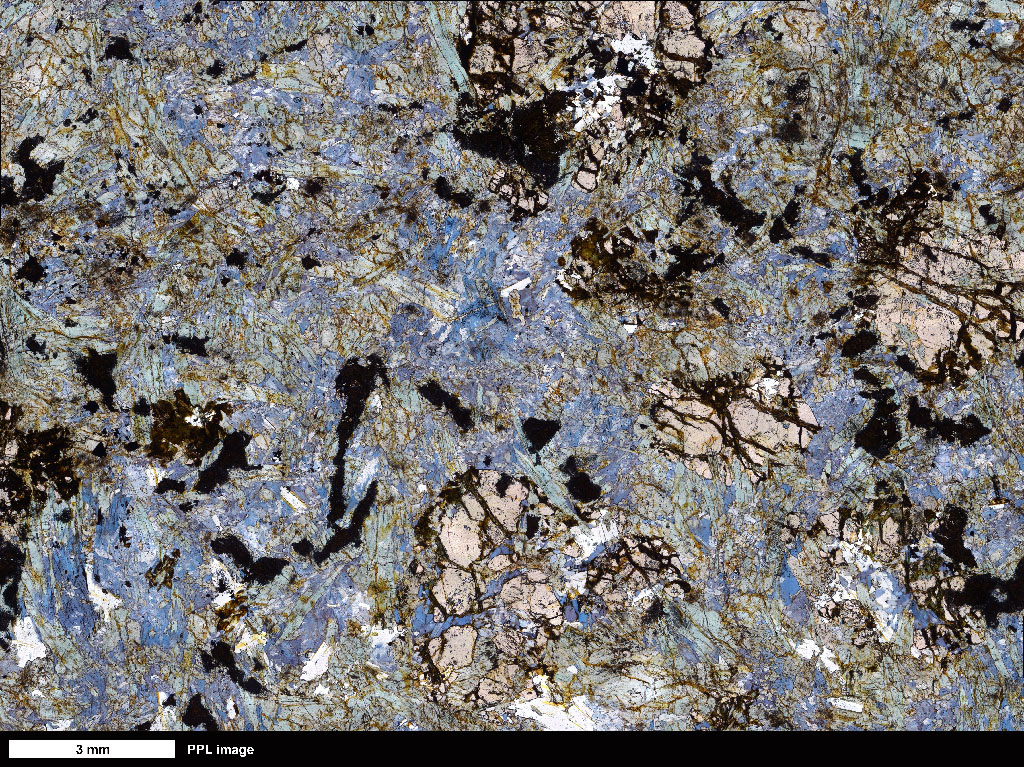Mineralogical Changes in Metamorphic Rocks
3.1 Introduction
Changes in the mineralogy of a rock during metamorphism can be dramatic or mundane, depending on the rock that is being metamorphosed. The two thin sections at the top of this page show the contrast between the mineralogy of a typical basalt and the mineralogy of an example of a metamorphosed basalt. The thin section on the left is a basalt from the Isle of Mull, Scotland, comprised of plagioclase, augite, and opaque oxides. The thin section on the right is a metamorphosed basalt from Norway, comprised of garnet, omphacite, and opaque oxides. The rock on the right has a chemical composition similar to the basalt, but its mineralogy is quite different (as is its texture).
Changes in the mineralogy of a rock during metamorphism can be dramatic or mundane, depending on the rock that is being metamorphosed. The two thin sections at the top of this page show the contrast between the mineralogy of a typical basalt and the mineralogy of an example of a metamorphosed basalt. The thin section on the left is a basalt from the Isle of Mull, Scotland, comprised of plagioclase, augite, and opaque oxides. The thin section on the right is a metamorphosed basalt from Norway, comprised of garnet, omphacite, and opaque oxides. The rock on the right has a chemical composition similar to the basalt, but its mineralogy is quite different (as is its texture).
Not only does the mineralogy of a basalt change during metamorphism, but there are many possible minerals and mineral assemblages for metamorphosed basalts. Each thin section in the second pair (above) was also prepared from a metamorphosed basalt. Each contains minerals that are not found in the other, or in the metamorphosed basalt of Figure 02.
The variety of minerals, mineral assemblages, and textures observed in metamorphic rocks is both intriguing and bewildering. Geologists have responded to the wide diversity of metamorphic rocks by looking for patterns in their occurences. An important and enduring feature of the analysis of metamorphic rocks has been to group them by mineralogy, either by the presence of individual minerals or by the presence of particular mineral assemblages.
The variety of minerals, mineral assemblages, and textures observed in metamorphic rocks is both intriguing and bewildering. Geologists have responded to the wide diversity of metamorphic rocks by looking for patterns in their occurences. An important and enduring feature of the analysis of metamorphic rocks has been to group them by mineralogy, either by the presence of individual minerals or by the presence of particular mineral assemblages.



